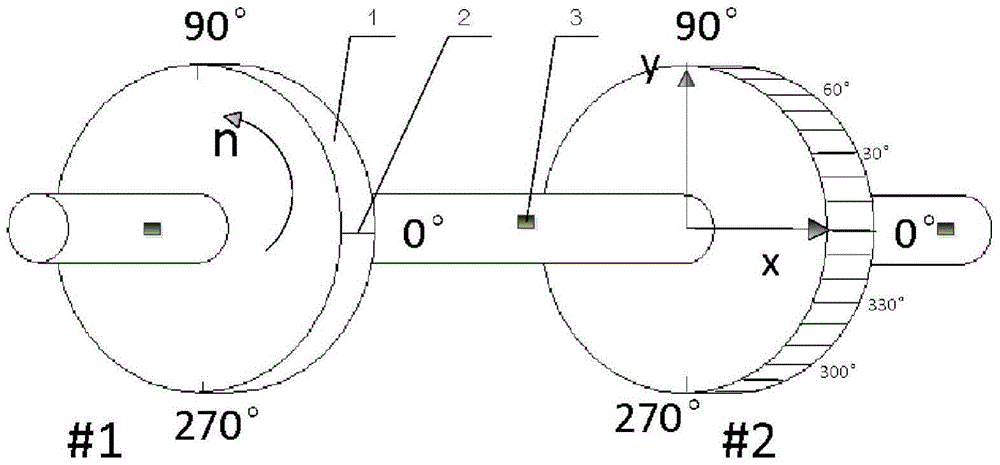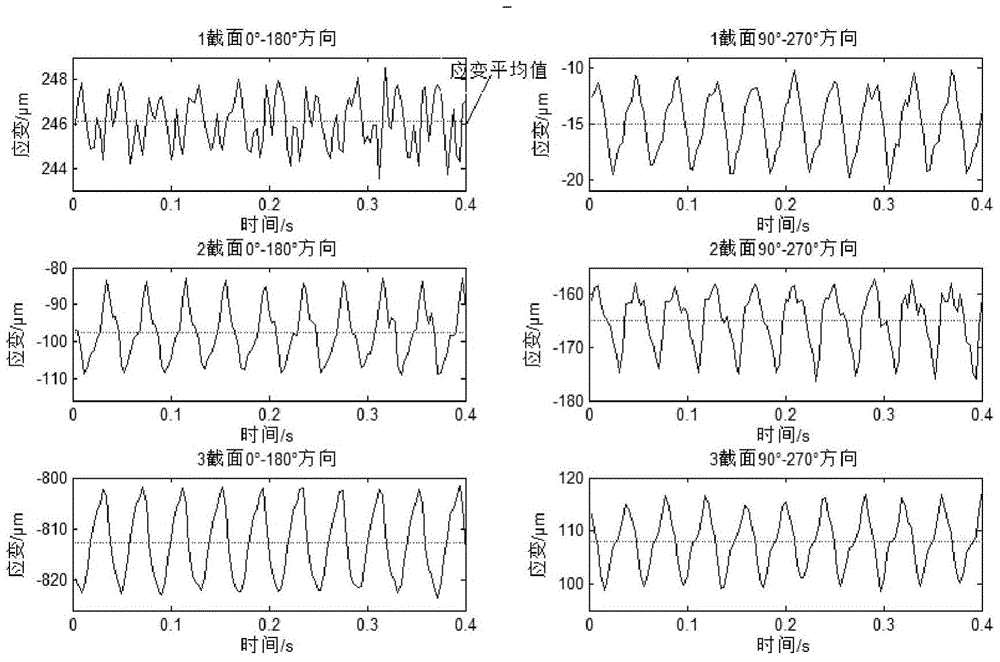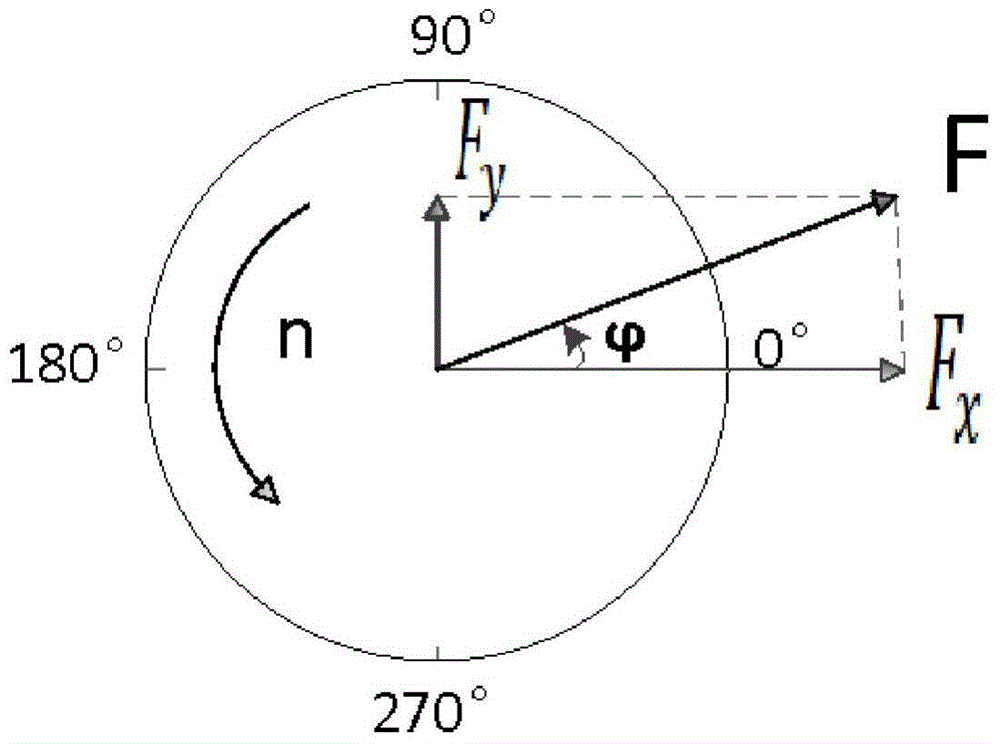A dynamic balance detection method for multi-disc rotors based on rotating coordinate system
A technology of rotating coordinate system and rotor dynamic balance, which is used in static/dynamic balance testing, machine/structural component testing, measuring devices, etc. It can solve the problems of not considering the elastic deformation of the rotating shaft, limited sampling frequency, and low efficiency.
- Summary
- Abstract
- Description
- Claims
- Application Information
AI Technical Summary
Problems solved by technology
Method used
Image
Examples
Embodiment Construction
[0066] Further explain the present invention below in conjunction with accompanying drawing.
[0067] This example is for figure 1 The shaft system shown in the experiment is carried out, and the double disc is taken as an example to provide a multi-disc rotor dynamic balance detection method based on the rotating coordinate system. refer to Figure 2-4 .
[0068] Such as Figure 4 As shown in the flow chart, the method for detecting the dynamic balance of a multi-disc rotor in a rotating coordinate system according to this embodiment includes the following steps:
[0069] A. Install the rotating shaft to be tested on the test stand;
[0070] B. Strain sensors are arranged on both sides of the rotating shaft to be identified. Taking the two roulette models shown in the figure as an example, it is necessary to select three sections at both ends of the roulette, and arrange a set of strain sensors in the directions of 0°-180° and 90°-270°, each with 3 sections, and a total ...
PUM
 Login to View More
Login to View More Abstract
Description
Claims
Application Information
 Login to View More
Login to View More - R&D
- Intellectual Property
- Life Sciences
- Materials
- Tech Scout
- Unparalleled Data Quality
- Higher Quality Content
- 60% Fewer Hallucinations
Browse by: Latest US Patents, China's latest patents, Technical Efficacy Thesaurus, Application Domain, Technology Topic, Popular Technical Reports.
© 2025 PatSnap. All rights reserved.Legal|Privacy policy|Modern Slavery Act Transparency Statement|Sitemap|About US| Contact US: help@patsnap.com



